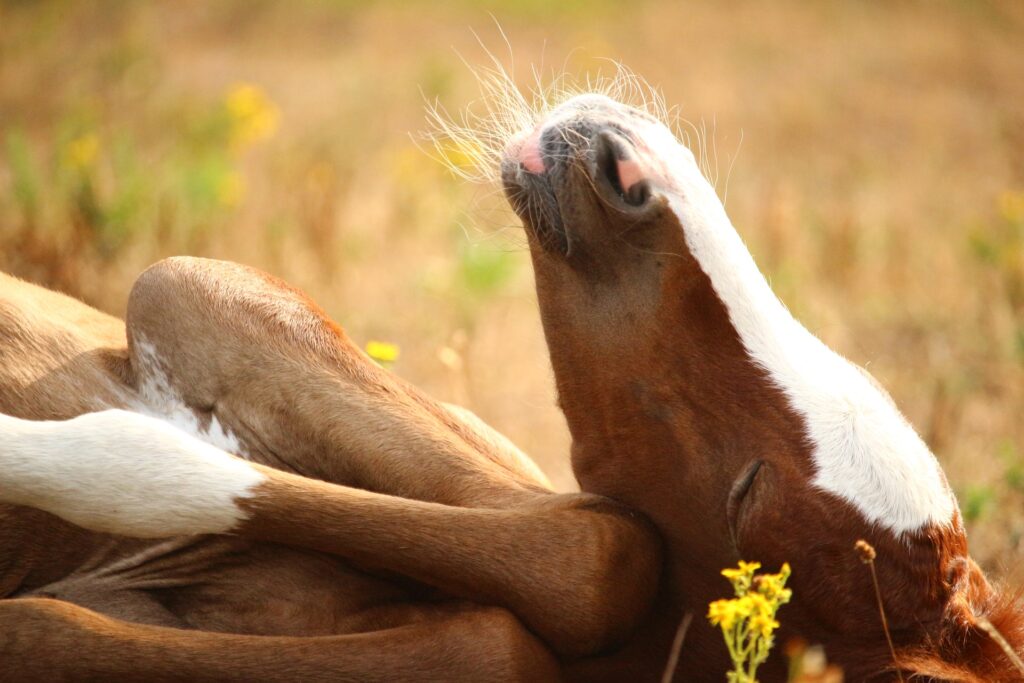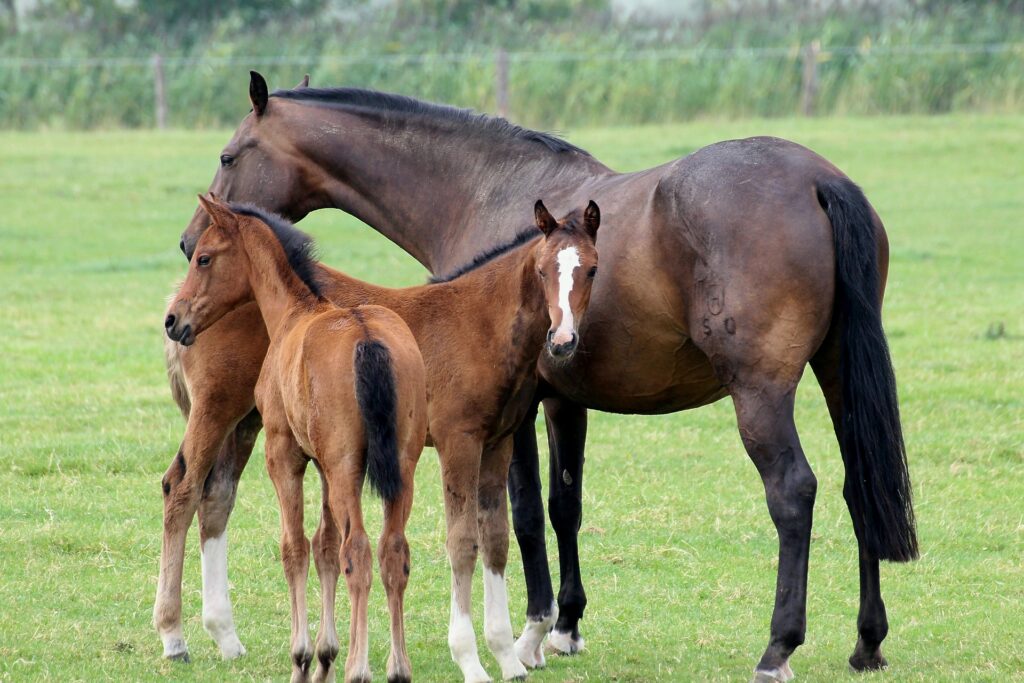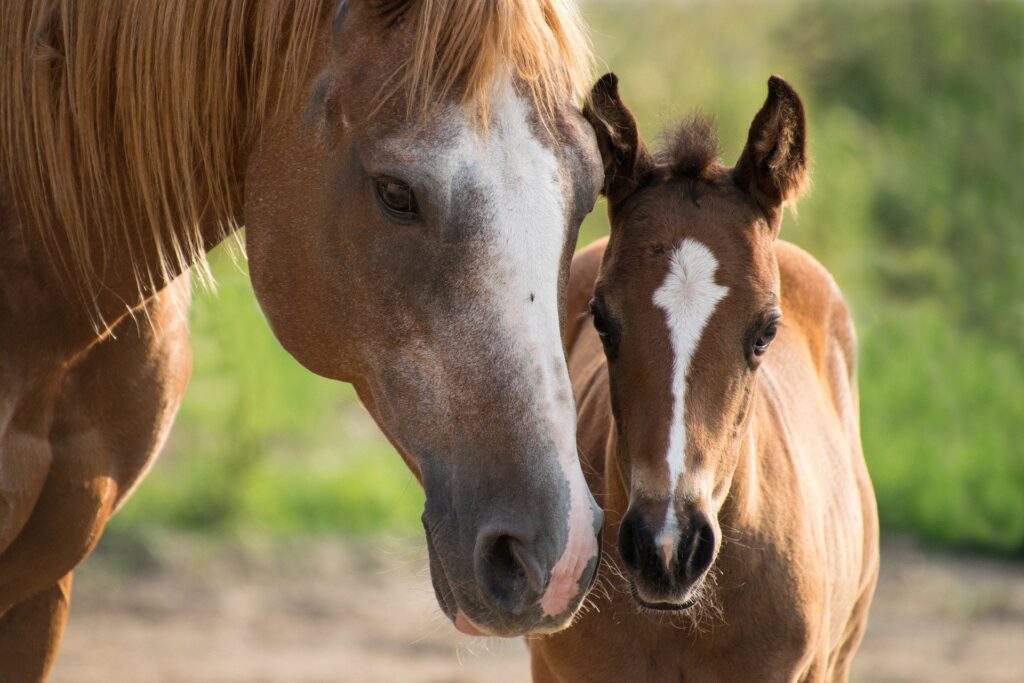
Colics in horses: useful tips for prevention
Colic is one of the most common and delicate issues in horse care.
Feed and products in 25kg bags excluded
Bank transfer | Paypal | Credit cards

10 things you absolutely have to know if you have foals
Weaning is a stressful time in the life of the foal who, if he could, would love to drink his mother’s milk for a very long time, as it is very nutritious. Overlooking this subject, i.e. the correct nutrition of the foal, may require paying a very high price, quantifiable in delayed growth of the foal, incorrect development of its musculoskeletal structure and poor athletic performance.

Do you know how to feed your foal correctly? To help you answer this question and avoid all the things that poor nutrition entails, we have prepared a list of 10 things for you that you absolutely must know about feeding your foal:
1.CHOOSE THE RIGHT TIME TO WEAN:whatever life, sporting or otherwise, your foal will face, it is always a good idea not to wean him before he is 3 months of age. It is extremely important for foals to drink their mother’s milk for the first three months of their life, as it is a source of essential components for their health and growth, just as it is for humans.

2. IDENTIFY WHICH GROWTH PHASE YOUR FOAL IS CURRENTLY IN: it is essential to understand what growth phase your foal is in order to best identify its nutritional needs.
| Months of life | Name of growth phase |
| 0 – 6 months | Foals |
| 6 – 12 months | Weanlings |
| 12 – 18 months | Yearlings |
| >18 months | Long yearlings |
3. READ YOUR FOAL’S FEED LABEL: it may seem trivial, but it is not. It all starts here. There is essential information on the label that you need to understand in order to know if you are feeding your foal correctly. So, before proceeding to read the following points, go to the riding school or stable, peel off the feed label or take a picture of it with your mobile phone, making sure to photograph the “Components”, “Additives” and “Analytical Components” sections.
4. KEYWORD: LOTS AND LOTS OF (TRULY LOTS AND LOTS OF) PROTEIN: a growing foal, just like a small child, needs first-rate nutritional sources that can provide it with the ‘building blocks’ for proper growth. The keyword for the foal’s correct growth is protein. Yes, nothing out of the ordinary, yet it is essential to choose a feed with high protein levels for the foal, derived from first-rate protein sources.
5. THE IMPORTANCE OF FIRST-RATE FATTY SUBSTANCES: the foal needs 300 grams of fat per day and 14,400kcal of digestible energy. These nutritional requirements are by no means easy to meet: it is therefore important to check that the feed we have chosen for our foal has sources of good fats, provided by vegetable oils.
6. WHAT TO LOOK FOR: there are certain raw materials that must be included in a foal’s feed: soya, yeast, beet pulp, first-rate vegetable oils (such as non-GM soya), rice hulls, bran and alfalfa. Whey and milk powder are also welcome.

7. WHAT TO AVOID: Knowing what foods should never be included in a foal’s feed is essential. Raw materials to be avoided include: maize, soya husks, straw, grape pips, citrus pulp and cereals with high starch content. These substances are not suitable for a growing body, such as that of the foal. For this reason, it is good to check the label of the feed you have chosen for your foal.
8. CALCIUM AND PHOSPHORUS FOR A STRONG SKELETON: calcium and phosphorus are essential elements in the foal’s diet, as they will be the “building blocks” with which the body will build a strong and robust skeleton. A lack of these substances in the foal’s diet could lead to a fragile skeleton and, in the worst case, an incorrectly formed skeleton.
9. HOW TO REPLACE BREAST MILK: unfortunately, it can happen that, for various reasons, the foal runs out of its mother’s milk early on. In such cases, it must be understood at an early stage whether the foal has taken colostrum or not. If the foal has not consumed colostrum (the first milk produced by the dam in the first 6-8 days of the foal’s life) then “artificial colostrum” must be administered so that the foal’s immune system can be activated. If, on the other hand, the foal has been left without its mother’s milk after the first 6 to 8 days of its life, it is therefore sufficient to give it milk after it has consumed colostrum. There are many brands of milk on the market, which can be found in powdered form, ready to dilute in water and administered via feeding bottles.
10. YES TO HAY, BUT ONLY OF EXCELLENT QUALITY: the foal, in its growth phase, has an intestine that is itself growing. We cannot, therefore, expect to provide it with hard, thick hay. Instead, we should prefer top-quality hay that is thin and soft. So here are the 10 things you absolutely have to know if you have foals: now you too know how to feed your foal properly!

Colic is one of the most common and delicate issues in horse care.

Thanks to its anti-inflammatory, anti-oedemigenous and pain-relieving properties, it is perfect for protecting horses’ osteoarticular well-being.

The use of clay dates back to very ancient times and even today it has not lost its fame as a natural remedy with a thousand uses.

The warm season is upon us and for many riders it is time to take the clipper in hand…

Here we are at our second meeting with our Unika Blog Naturopathy section. I am Sara Maiani, specialized in Natural Medicine, Clinical Phytotherapy and Naturopathy.

Born in 1995, Mirko began to practice the discipline of “combined driving” at only 6 years old, spurred by his family’s passion for the equestrian world, he began to approach national and international competitions at 17 years old